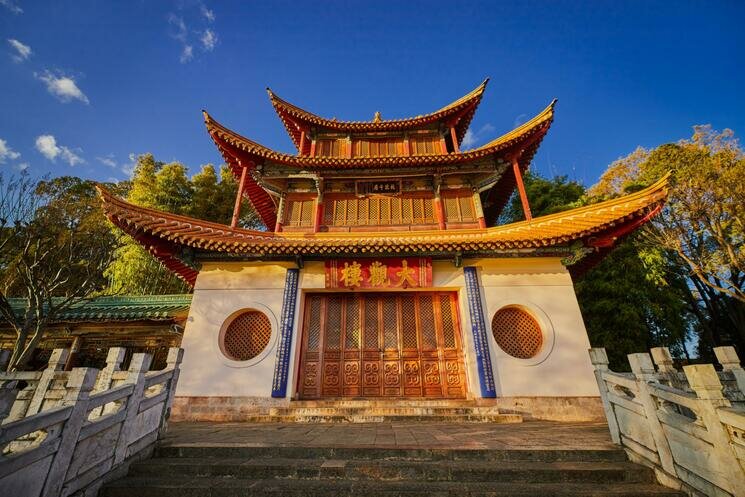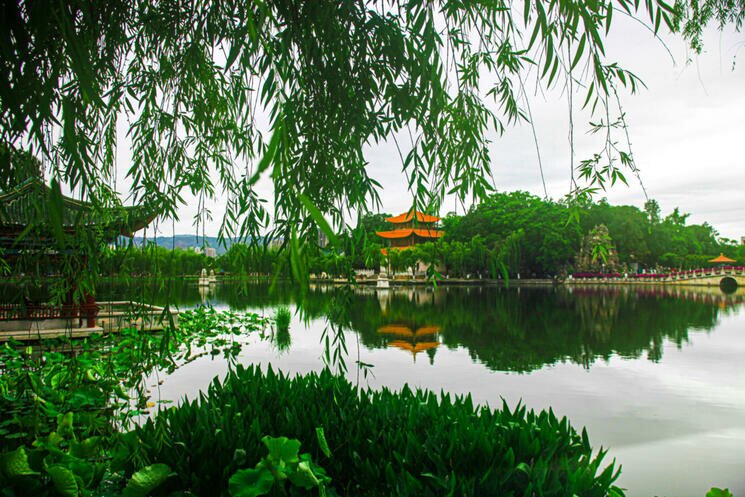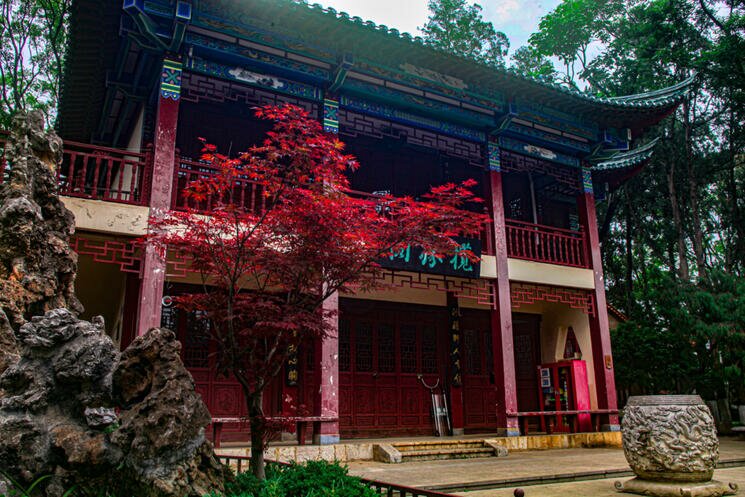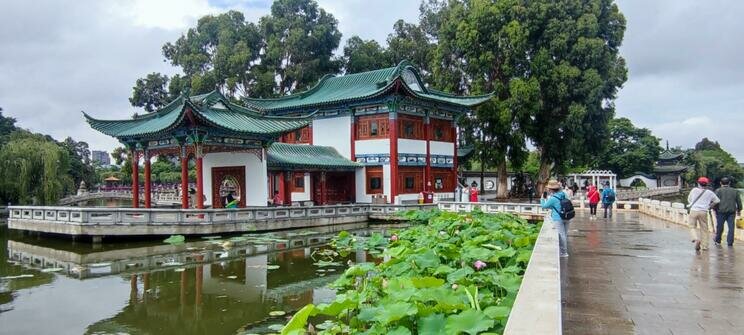Daguan Park lies on the banks of Dianchi Lake, in the southeast corner of Kunming. Sitting in the shadows of the Western Hills, this is one of the enchanting open spaces in the area and also boasts plenty of interesting historical and literary connections that visitors can explore.
The focal point of the park is the Daguan Pavilion which traces its origins back to 1690 when Wang Jiwen, then the Governor or Yunnan Province, became deeply attached to the panoramic vistas from this spot. He commissioned a series of bridges and pavilions to be built on the site that he loved, adding rockeries and bonsai trees in the manner of traditional Chinese gardens. The main three-story tower looks out over the lake and surrounding hills, resulting in the name Daguan Ge, which translates to 'Grand View Pavilion'.

The pavilion is also known for its association with poetry. Inscribed on the gateposts guests will encounter the famous couplets of Qing Dynasty poet Sun Rangweng, extolling the sublime beauty of the views here, and emphasizing the important role of Dianchi Lake in the history of Yunnan Province. As the pavilion's literary reputation grew, scholars from across the country traveled to the area for inspiration, and a large number of poems have been composed here over several centuries.
The total area of the park, including parts of the lake, covers close to 500,000 square meters, which can be covered on foot thanks to the traditional bridges that connect several distinct zones. There are also a number of historic landmarks that visitors can seek out, each of which have their own distinct feel.

In the area known as the 'Historic Garden', for example, you'll find Jinghuapu and Louwailou which include elements from the Ming and Qing Dynasties, whilst the gardens Yuyuan and Luyuan both showcase the east-meets-west style that was popular in the early twentieth century. The West Garden, on the other hand, is far more contemporary in appearance, and attracts local retirees who often gather here to hang out and play instruments.
Especially noteworthy is Jinhuapu, the main scenic area of the park. In 1682, a monk named Qianyin constructed the Guanyin Temple on this site. However, both the temple and the Daguan Pavilion itself were burned to the ground in the 19th century during the reign of the Xianfeng Emperor. Thanks to donations the pavilion was eventually rebuilt but, due to a lack of funds, the temple has never been replaced.

Whether enjoyed primarily as a botanical garden or as a storied historical site, the numerous ponds and bridges of Daguan Park make a fine place for both visitors and locals alike to explore on foot, take in the magnificent views and perhaps even practice their tai chi skills.






Comments